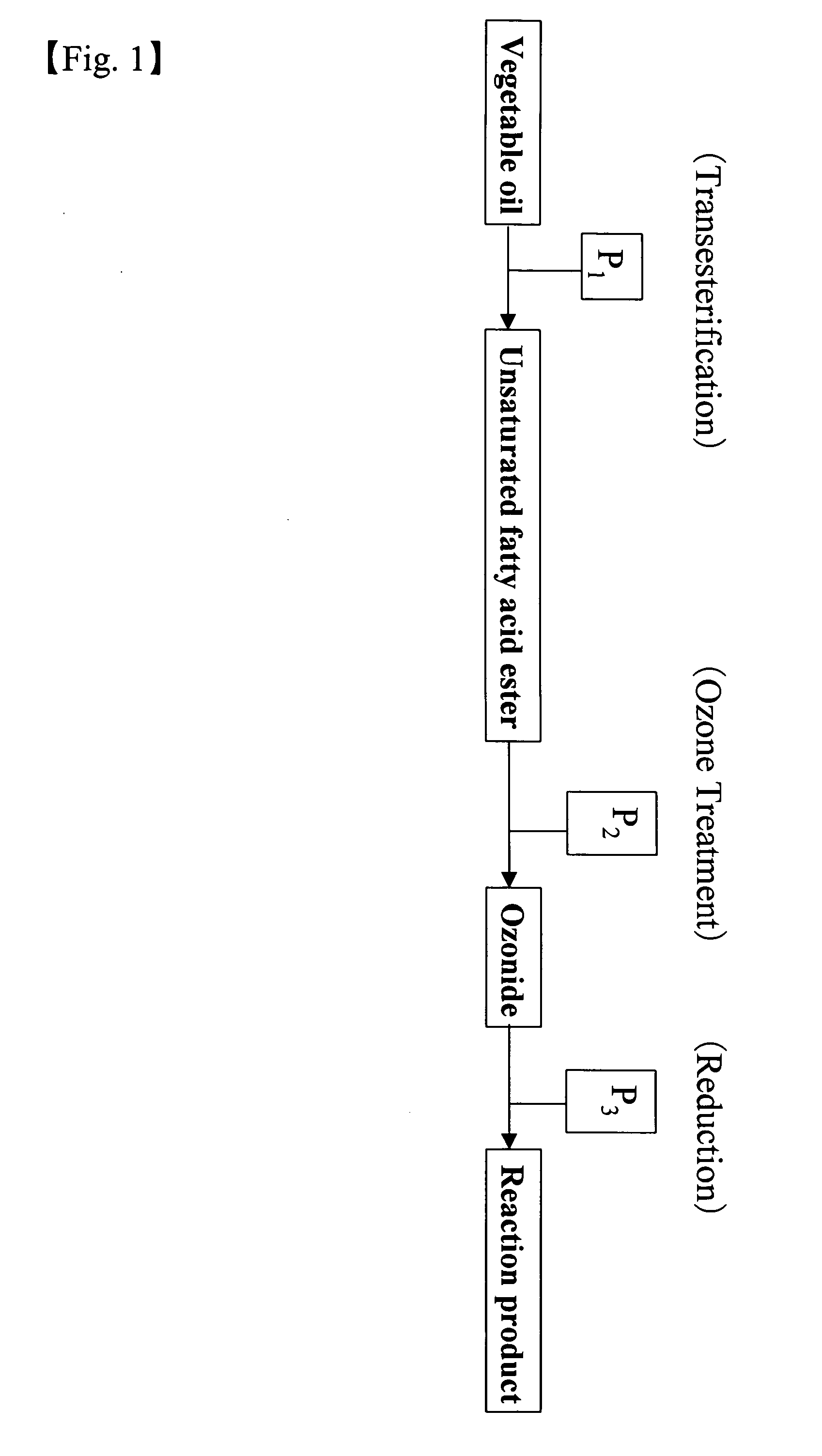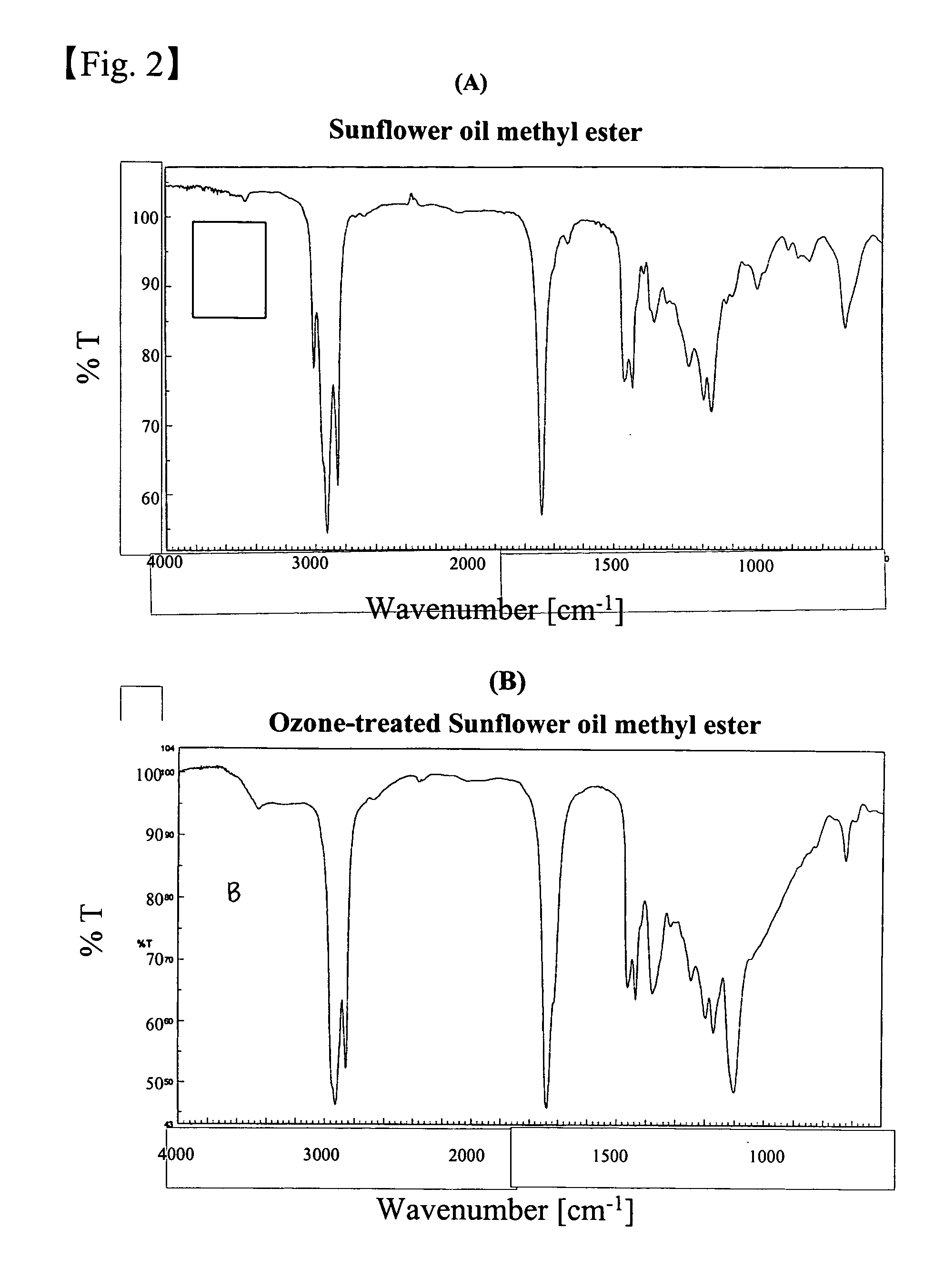Method for producing vegetable oil fuel
a vegetable oil and fuel technology, applied in the direction of fatty acid production, liquid carbonaceous fuels, separation processes, etc., can solve the problems of difficult to adopt methyl esterified fuels, low yield, and decreased function of new engines or dep eliminators, and achieve rapid growth of sunflowers, high reactivity, and high yield
- Summary
- Abstract
- Description
- Claims
- Application Information
AI Technical Summary
Benefits of technology
Problems solved by technology
Method used
Image
Examples
Embodiment Construction
[0048]A preferred embodiment of a method for producing vegetable oil fuel according to the present invention will be described below based on the accompanying drawings. However, it is to be understood that any of the features disclosed in the following can be used as such and individually for further embodiments although said features are disclosed in the context of a combination of other features in the following.
[0049]First, FIG. 1 is a step flow diagram of a method for producing vegetable oil fuel according to the present invention.
[0050]First, a method for producing vegetable oil fuel according to the present invention is characterized by comprising at least a transesterification step P1 of performing a transesterification reaction with respect to vegetable oil with triglyceride (triacylglycerol) structure having unsaturated fatty acid, an ozone treatment step P2 of bringing ozone into contact with unsaturated fatty acid methyl ester generated in this transesterification step P1...
PUM
| Property | Measurement | Unit |
|---|---|---|
| voltage | aaaaa | aaaaa |
| current | aaaaa | aaaaa |
| molar ratio | aaaaa | aaaaa |
Abstract
Description
Claims
Application Information
 Login to View More
Login to View More - R&D
- Intellectual Property
- Life Sciences
- Materials
- Tech Scout
- Unparalleled Data Quality
- Higher Quality Content
- 60% Fewer Hallucinations
Browse by: Latest US Patents, China's latest patents, Technical Efficacy Thesaurus, Application Domain, Technology Topic, Popular Technical Reports.
© 2025 PatSnap. All rights reserved.Legal|Privacy policy|Modern Slavery Act Transparency Statement|Sitemap|About US| Contact US: help@patsnap.com



